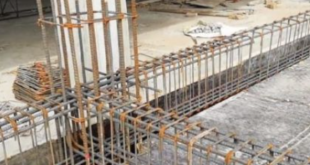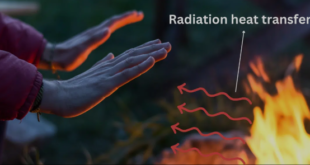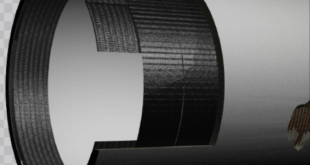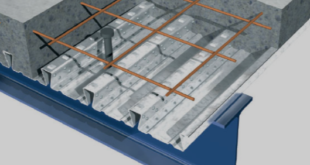Simulation of high-velocity impact on the Ceramic-Glass polypropylene (GFPP) panel in Abaqus has been done in this tutorial. The ceramic is modeled as a three-dimensional solid part. The GFPP part is modeled as a three-dimensional shell part with some layers. You can see a figure of the assembled parts below
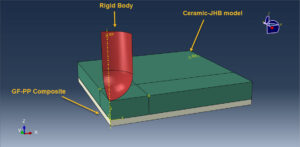
Continuous fiber-reinforced thermoplastic composites have become an important development direction of composites. Its products have been widely used in many fields such as aerospace, automobile, and electrical appliance. Among them, glass fiber-reinforced polypropylene (GP/PP) composites are widely used in the manufacture of seat skeletons, bumper beams, roofs, and other components due to their low cost, easy processing, and good chemical stability
The Hashin criterion identifies four different modes of failure for the composite material. The four modes are tensile fiber failure, compressive fiber failure,
tensile matrix failure, and compressive matrix failure. All the data are extracted from the research paper.
To model ceramic behavior under severe load, the Johnson-Holmquist-Beissel (JHB) is selected. The JHB model consists of three main components: a representation of the deviatoric strength of the intact and fractured material in the form of a pressure-dependent yield surface, a damage model that transitions the material from the intact state to a broken state, and an equation of state (EOS) for the pressure-density relation that can include dilation (or bulking) effects as well as a phase change
Dynamic explicit steps and general contact interaction are used as input modifications. The proper boundary conditions, initial conditions, and meshes are assigned to all parts
After the simulation, all results such as stress, strain, damage, failure, displacement, and others are available. You can see some figures for the results below
You can provide this simulation’s CAE, INP, and English video files here. The cost of these files is Twenty-Six Euros. you can click on the bellow bottom to begin the process
You can purchase the tutorial through a PayPal account, a Visa, or a Master card, just before payment, send me an email to this address: karampourp@gmail.com

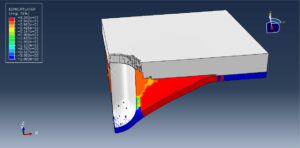
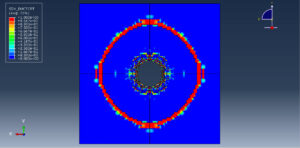
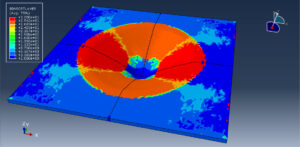
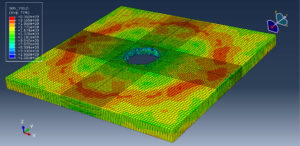
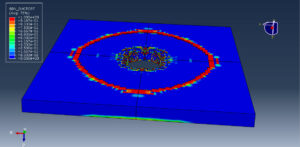
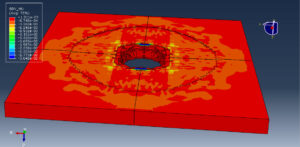
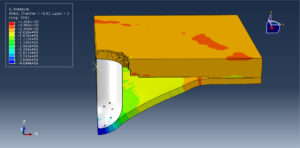
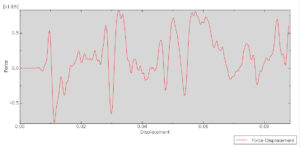
 تمامی مطالب این سایت محفوظ بوده و هر گونه کپی برداری از مطالب این سایت پیگرد قانونی دارد.
تمامی مطالب این سایت محفوظ بوده و هر گونه کپی برداری از مطالب این سایت پیگرد قانونی دارد.
 Abaqus tutorials Abaqus tutorials
Abaqus tutorials Abaqus tutorials
